90%的电子游戏不应该含有复杂的故事
作者:Ian Fisch
我喜欢优秀的电影,优秀的书籍,优秀的电视剧。通常来说,我是一个非交互性媒体的超级粉丝。但我却会跳过电子游戏的多数过场动画。为什么呢?
当《马里奥银河2》发布时,有些评论者批评它勉强算得上是一个故事。该游戏的故事包含标准的马里奥背景:库巴劫持了公主,迫使马里奥跨越这个抽象世界的千山万水去救她。
对我来说这并不仅仅是个故事。像《马里奥银河》这种游戏本就不该含有复杂的故事。我们很难想象解释马里奥为何必须骑着大仓鼠跨越天空的飘浮的木板,或者库巴的体积为何可以增长到办公大楼那么庞大,这种情节会成为极具吸引力的故事。
当然,许多电子游戏文案可能会尝试将这些随机环节拼凑成一个整体,但这就会成为一个值得讲述的故事了吗?
如果《马里奥银河》是由不同的开发商制作,假设是世嘉,这款游戏可能就会含有一个马里奥被库巴吞进变形机器的过场动画,解释游戏的许多荒诞和多变的环境。另一个过场动画可能就是展示库巴搜索宇宙寻找传说中的能量球(可以让它长出70只脚)等内容。
但为什么呢?这有什么意义?这真的是很有吸引力的故事吗?这是人人都想叙述的故事吗?
故事或解释?
电子游戏过场动画通常是解释玩法元素,而不是作为传达有趣情节点或对话的途径。例如解谜平台游戏《Trine》及其续作允许玩家在三种角色间切换,每种角色都有独特的长处和弱点。因此故事围绕着一个拥有将三人威力融入一人身体的古老水晶展开了。
评论者不是嘲笑就是鄙视《Trine》的这一故事情节。这根本就不是个需要说明的故事,而是在解释一个有趣的游戏机制。
优秀的故事不合拍
事实上,一般的电子游戏结构并不适合引人入胜的故事内容。
以一般的第三人称或第一人称射击游戏为例。其基本的结构包含玩家在15个关卡中的长途跋涉,在每个关卡之间杀死30-60名坏蛋。每隔几个关卡就要与boss正面交锋。
这种结构可以成为杰出游戏体验的基础,但却不可能同时成就一个杰出的故事。它甚至不可能造就一部有趣的动作电影。虽然你的一般电子游戏主角可以杀敌1千,但《The Matrix》中的Neo却没有杀过多少人,《蓝博:第一滴血》、《终结者2》中的Stalone、Swarzenegger却没有杀过一个人。
将《终结者》制作成动作游戏
让我们试试把《终结者》这部经典动作电影的故事制作成一个现代动作电子游戏。我们将尽量把它的动作序列转化成游戏关卡。
电影从英雄Kyle Reece传送到1985年开始。他在半夜时抵达,深身赤裸,手无寸铁。
他从一名警察那里偷了一把枪,然后躲藏在一个百货商店中。这就是该场景的结束。
现在我们将对这一场景做些调整,使之成为首个关卡。首先,我们将至少添加12名警察,Reece得同他们所有人交手。所以在首个关卡末尾,Reece将杀死12名警员。这是我们在电影中的头10分钟体验。
该电影的下一个动作场景包括Reece及终结者在一家酒吧的枪战。
这是个简短的场景。Reece抽出一把子弹抛向终结者的胸前,然后与Sarah溜之大吉。
所以我们应该制作一些较大的调整。也许Reece可以在去酒吧的途中进入枪战,击毙20-30个普通的黑帮无名小卒。当他到达酒吧时,与终结者的交锋就可以作为boss战斗。
在电影中,Reece和Sarah快速逃离了酒吧,但这一幕却并不适用于游戏。但也许酒吧的保险门上锁了,迫使Reece留下下继续战斗。虽然玩家还是陷入了与终结者交战的困境,但Sarah可以去敲击保险门。我们将让Sarah成为电子游戏中的一个电脑助手。
让我们跳过电影的高潮直接进入我们的最后关卡。在电影中,飞车追击导致终结者被烧得只剩下金属骨架。
Reece唯一的武器就是土制炸弹,他将炸弹固定在终结者的胸腔中。炸弹炸飞了终结者的腿,终结者爬向Sarah,她则应电影剧情的需要在一个工业印刷机中将其粉碎了。
所以这一幕需要投入大量的工作。
首先,这是我们最后一个关卡。优秀的游戏设计会持续给予玩家新能力,因此持续为玩法增加深度。所以在游戏的高潮中,我们将为Reece补充一个急射小机枪以及一些手榴弹。
此外最后一个关卡应该是游戏的最大挑战。所以我们将添加一些其他的终结者供Reece交战。也许可以从未来将它们传送过来。
而作为终极boss的终结者,在最后一役中应该更为强大,更不是更弱。所以它不应该是被烧得只剩下金属骨架,而要使出它的必杀技能,变身成为身高20英尺的超级终结者!肩膀还安装着导弹发射器!
只有再与超级终结者及其未来敌人的漫长交战之后,Terminator还会倒地爬行。游戏此时可以将切换控制权转交给Sarah角色,允许玩家通过快速反应事件将终结者粉碎在工业印刷机里。
这样我们就将一个拥有明确反派以及专注于动作的紧凑故事转变成了一摊复杂的混乱局面。我所描述的这个游戏有可能具有大量趣味元素,但却无法造就人们想看到的非交互式故事。为何要打破出色的玩法来讲述一个三流的故事呢?
这很重要吗?
所以也许多数电子游戏过场动画只是浪费时间,但我可以直接跳过它们吗?并不总是如此。
例如《孤岛惊魂3》在冗长、无法跳过的过场动画中给予玩家有限的角色控制能力。这些过场动画是为解释普通人Joe如何成为一个无法阻挡的杀人机器(游戏邦注:因为游戏设计师认为这可能会很有趣)。这些过场动画太脱节了,导致许多评论员奉劝玩家完全忽略游戏的宣传,只要去玩游戏的基地入侵任务即可。
也有些时候,游戏会允许玩家忽略过场动画,但却必须付出相应的成本。例如,有些游戏会在过场动画中包含相关的玩法信息。
例如,你可以忽略一个过场动画,之后就会发现自己站在一块空地上,屏幕上出现的任务目标显示“在Fort Blackstone拾取Shelly的超空间引擎”。然后你就会困惑“谁是Shelly?””,“超空间引擎到底长啥样?”
以及“这些建筑中哪一个才是Fort Blackstone?”这些问题的答案都在你刚刚忽略的那个过场动画中,但你没有机会重新再观看一次了。
这种情况可能并不常见,但你永远也不知道它什么时候会给你带来致命一击。所以你只好连坐数小时进行空洞无趣的对话,因为你害怕自己可能会错过重要的信息。
什么游戏才应该采用复杂的故事?
只有那些围绕故事开始的游戏才应该含有复杂的故事。如果制作游戏的灵感就是讲故事,那么这个故事可能就值得一提。对于《行尸走肉》、《猴岛》、《King’s Quest》以及《暴雨》等游戏来说就是如此,但《战争机器3》这种游戏就不适用了。
所以如果你负责编写以故事为核心的游戏,那就放手去做吧。否则就只需要简单地解释玩家为何需要从8个城堡搜集8个吊坠就可以了。(本文为游戏邦/gamerboom.com编译,拒绝任何不保留版权的转载,如需转载请联系:游戏邦)
90% of Videogames Shouldn’t Have Complex Stories
by Ian Fisch
MARIO IS JUST FINE
I love good movies. I love good books. I love a good TV series. In general, I’m a huge fan of noninteractive media. Yet I skip through most cutscenes in videogames. Why is this?
When Super Mario Galaxy 2 released, some reviewers criticized its barely-there story. The game’s story consists of the standard Mario Setup: Bowser kidnaps the princess, forcing Mario to traverse a bunch of abstract worlds in order to rescue her.
That is more than enough story for me, thank you. Games like Mario Galaxy simply shouldn’t have a complex story. It’s hard to imagine a compelling narrative that explains why Mario must ride a giant hamster ball accross a wooden plank floating in the sky, or why Bowser can grow to the size of an office building.
Of course, many videogame writers would try to bring all of these random parts into a cohesive whole, but would it be a story worth telling?
If Mario Galaxy were made by a different developer, Sega for example, the game might feature a cutscene where Bowser sucks Mario into his transdimensional warp machine, explaining the game’s many absurd and varied environments. Another cutscene could show Bowswer searching the universe for the legendary power orb, which would allow him to grow 70 feet. And so on.
But why? What’s the point? Is this really a compelling narrative? Is this a story anyone would want to tell on its own?
STORY OR EXPLANATION?
Videogame cutscenes are often attempts to explain gameplay elements, rather than a means of conveying interesting plot points or compelling dialog. For example the puzzle-platformer Trine and its sequel allows a player to switch between three characters, each with unique strenghts and weaknesses, at any time. Thus, the story revolves around an ancient crystal with the ability to fuse three people together into one body.
Reviewers either derided or dismissed Trine’s plot. It simply wasn’t a story that needed to be told, but rather an explanation of a fun game mechanic.
GOOD STORIES DON’T FIT
The fact is that the average videogame structure just doesn’t make for a compelling narrative.
Take your average 3rd or first person shooter. The basic structure consists of the player trudging through about 15 levels, killing 30-60 badguys between in each one. Every few levels, he’ll fight a boss.
This structure can be the basis for a great gaming experience, but is unlikely to also facilitate a great story. It wouldn’t even make for an interesting action movie. While your average videogame protagonist will wrack up a body count in the 1000′s, Neo doesn’t kill more than a handful in The Matrix, and neither Stalone nor Swarzenegger kill a single person in Rambo: First Blood, nor Terminator 2, respectively.
MAKING THE TERMINATOR INTO AN ACTION GAME
Just for fun, let’s try to fit the story of The Terminator, a classic action movie, into a modern action videogame. We’ll try to convert its action scenes into game levels.
The movie starts off with the hero, Kyle Reece, teleporting into the year 1985. He arrives in the middle of the night, naked and unarmed.
He steals a pistol off of a cop and then hides in a department store. That’s the end of the scene.
So we’re gonna have to make some changes to make this into a good first level. First of all, we’ll have to add at least 12 more cops, and Reece will have to fight them all. So by the end of the first level, Reece will have murdered a dozen police officers. This only takes us through the movie’s first 10 minutes.
The movie’s next action scene involves a gun battle in a dance club between Reece and the Terminator.
It’s a short scene. Reece pumps a couple shotgun shells into the Terminator’s sternum and then runs away with Sarah, his love interest.
So we’re going to have to make some big changes. Perhaps Reece could get into a gun fight on the way to the bar, with 20 to 30 nondescript gang members. Once he reaches the club, the fight with the Terminator can be our boss fight.
In the movie, Reece and Sarah quickly flee the club, but that won’t work for our videogame. Instead, perhaps the club’s security door is locked, forcing Reece to remain in combat. While the the player keeps the Terminator at bay, Sarah can be hacking the security door. We’ll make Sarah a computer expert in our videogame.
Let’s skip to the movie’s climax for the our last level. In the movie, a car chase ends with the Terminator being burned down to his metal endoskeleton.
Reece’s only weapon is a home-made pipebomb, which he lodges in the Terminator’s ribcage. The bomb blows off the Terminator’s legs. The Terminator crawls after Sarah. She manages to crush it in an industrial press for the movie’s climax.
So this one’s gonna need a lot of work.
First of all this is our final level. It’s good game design to steadily give the player new abilities, thereby steadily adding more depth to the gameplay. So for the game’s climax, we’ll have to supplement Reece’s pipebomb with an rpg, a minigun, and a few grenades.
Also the last level should be the biggest challenge in the game. So we’ll have to add in some other Terminators for Reece to fight. Maybe they teleport in from the future.
Also, the Terminator, as the final boss, needs to become STRONGER for the last confrontation, not weaker. So rather than being burnt down to an endoskeleton, the Terminator can plug himself into a powerline to become a 20 foot tall Super Terminator! With shoulder-mounted missle launchers!
Only after a lengthy battle against the Super Terminator and his future army, is the Terminator reduced to crawling. The game can then switch control to the Sarah character, allowing the player to crush the Terminator in the industrial press via quicktime event.
So there you have it. We took a tight story with a clear antagonist and focused action and turned into a convoluted mess. The game I just described has the potential to be a lot of fun, but doesn’t make for the kind of non-interactive narrative that someone would want to watch. Why interrupt great gameplay to tell a 3rd rate story?
DOES THIS MATTER?
Ok so maybe most videogame cutscenes are inane wastes of time, but I can skip past them right? Not always.
Far Cry 3, for instance, gives the player limited control over his character during long, unskippable cutscenes. These cutscenes are designed to explain how an average Joe can become an unstoppable killing machine (hint: because game designers thought it would be fun. Period.). These cutscenes are so uninvolving that many reviewers advised gamers to skip the game’s campaign entirely, playing the game’s base invasion missions instead.
Other times, a game will allow a player to skip a cutscene, but not without a cost. For instance, some games include pertinent gameplay information in their cutscenes.
For instance you’ll skip a cutscene and then you’ll find yourself standing in an open field with a mission objective on your screen that says “Pick up Shelly’s hyperdrive at Fort Blackstone”. So then you have to ask “who’s Shelly?”, “what the hell does a hyperdrive look like?”, and “which one of those buildings in the distance is Fort Blackstone?”. All of those questions were answered in the cutscene you skipped and have no way of rewatching.
This situation may not happen often, but you never know when it’s gonna strike. So you’ll end up sitting through hours of inane and unispired dialog because you’re afraid you might miss something important.
WHAT GAMES SHOULD HAVE COMPLEX STORIES?
The games that should have complex stories are those which were based around stories to begin with. If the inspiration for making the game was to tell a story, than there’s a chance the story is actually worth telling. This might be the case for games like The Walking Dead, Monkey Island, King’s Quest, and Heavy Rain but it’s is not the case for Gears of War 3.
So if you’re a game writer working on a game whose genesis was a story that someone was dying to tell in an interactive fashion, then go nuts. Otherwise, briefly explain why I have to collect 8 pendants from 8 castles, and then shut the hell up. (source:gamasutra)

























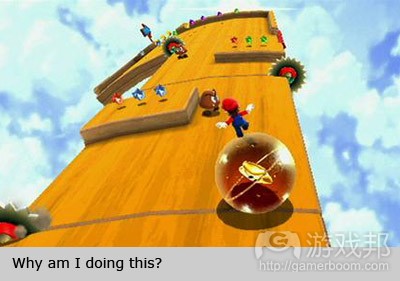

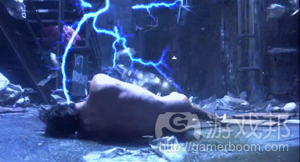
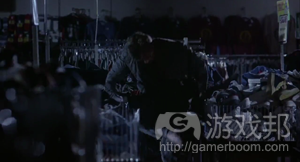
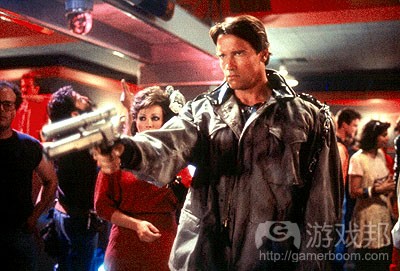
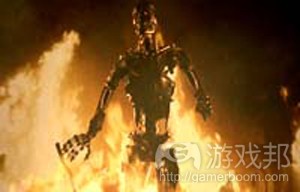

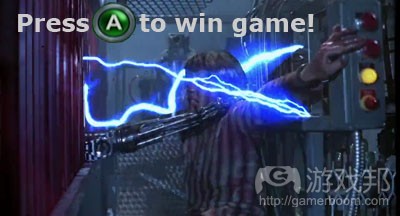














 闽公网安备35020302001549号
闽公网安备35020302001549号